|
 |
 Автор: Williams Автор: Williams
 Дата: 17 июня 2020 Дата: 17 июня 2020
 Просмотров: 1 472 Просмотров: 1 472 |
| |
T. Agami Reddy, Jan F. Kreider, Peter S. Curtiss, Ari Rab - Heating and Cooling of Buildings
Principles and Practice of Energy Efficient Design, Third Edition
CRC Press, 2017
pdf, 898 pages, english
ISBN: 978-1-4398-9989-2
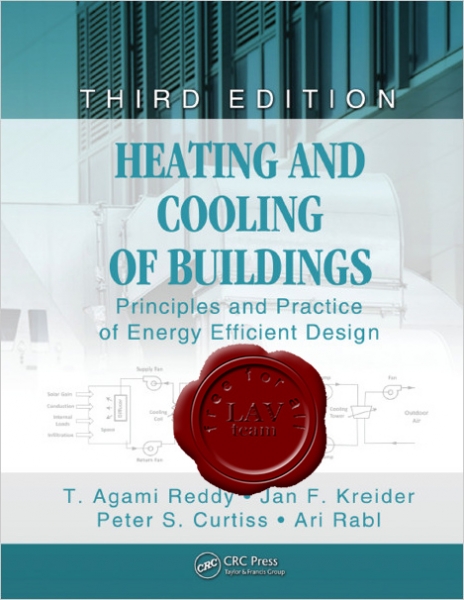
Heating and Cooling of Buildings: Principles and Practice of Energy Efficient Design, Third Edition is structured to provide a rigorous and comprehensive technical foundation and coverage to all the various elements inherent in the design of energy efficient and green buildings. Along with numerous new and revised examples, design case studies, and homework problems, the third edition includes the HCB software along with its extensive website material, which contains a wealth of data to support design analysis and planning. Based around current codes and standards, the Third Edition explores the latest technologies that are central to design and operation of today’s buildings. It serves as an up-to-date technical resource for future designers, practitioners, and researchers wishing to acquire a firm scientific foundation for improving the design and performance of buildings and the comfort of their occupants. For engineering and architecture students in undergraduate/graduate classes, this comprehensive textbook. |
| |
 Читать статью дальше (комментариев - 9)
Читать статью дальше (комментариев - 9)
| |
|
 |
 Автор: Williams Автор: Williams
 Дата: 15 июня 2020 Дата: 15 июня 2020
 Просмотров: 2 166 Просмотров: 2 166 |
| |
Dejan Mumovic, Mat Santamouris - A Handbook of Sustainable Building Design and Engineering
An Integrated Approach to Energy, Health and Operational Performance, Second edition
Routledge, 2019
pdf, 604 pages, english
ISBN: 978-1-138-21547-4
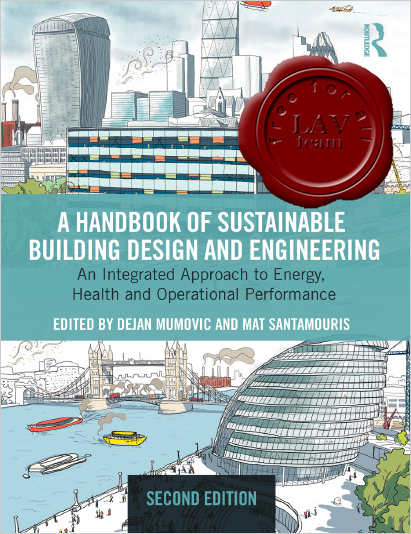
The second edition of this authoritative textbook equips students with the tools they will need to tackle the challenges of sustainable building design and engineering. The book looks at how to design, engineer and monitor energy efficient buildings, how to adapt buildings to climate change, and how to make buildings healthy, comfortable and secure. New material for this edition includes sections on environmental masterplanning, renewable technologies, retrofitting, passive house design, thermal comfort and indoor air quality. With chapters and case studies from a range of international, interdisciplinary authors, the book is essential reading for students and professionals in building engineering, environmental design, construction and architecture. |
| |
 Читать статью дальше (комментариев - 12)
Читать статью дальше (комментариев - 12)
| |
|
 |
 Автор: Williams Автор: Williams
 Дата: 13 июня 2020 Дата: 13 июня 2020
 Просмотров: 3 372 Просмотров: 3 372 |
| |
David Martin - Instant Revit! A Quick and Easy Guide to Learning Autodesk Revit 2021
David Martin, 2020
pdf, 521 pages, english
ISBN-13: 979-8650217909
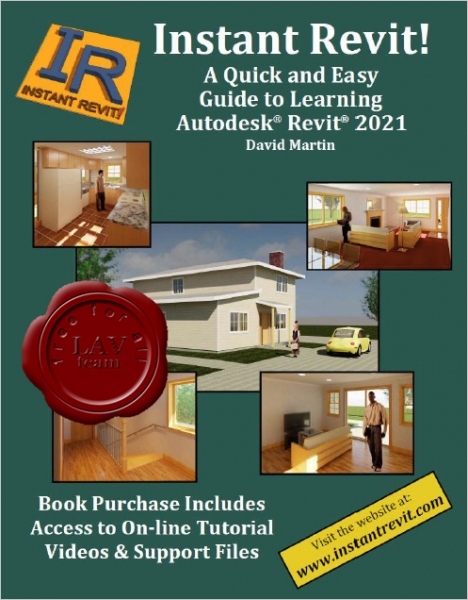
This book is designed to give the student a basic introduction to the Revit 2021 computer aided design (CAD) program. The book contains step-by-step project tutorials with screenshots using the Revit program. The units for the projects are in Imperial (Feet & Inches) units. The student begins with three warm-up projects designed to familiarize them with the Revit interface. These projects will use the 2D portion of the program that will guide the student through a drawing of a one-view drawing of a geometrical component, a lighting plan with two alternate plans, and a two-view drawing of a single story house. Once the student completes these projects, they will begin the main project. The project is a two-story residential structure. A three-dimensional model of the project will be developed and used to create views of the: first and second floor plans, section views, interior and exterior elevations, and detail views of the structure. Some of these drawings will be annotated with dimensions and notes. Door, window, and room finish schedules will be also be created. Once these drawings are completed, the student will then create design options of the structure. This allows the design to be presented with multiple styles or options within the same file. |
| |
 Читать статью дальше (комментариев - 17)
Читать статью дальше (комментариев - 17)
| |
|
 |
 Автор: Williams Автор: Williams
 Дата: 11 июня 2020 Дата: 11 июня 2020
 Просмотров: 3 756 Просмотров: 3 756 |
| |
David Martin - Engineering Calculations with Creo Parametric and PTC Mathcad Prime
Creo Power Users - Book 5
David Randolph Martin II, 2020
pdf, 210 pages, english
ISBN: 979-8649196673

This book will teach you how to integrate your engineering calculations into your Creo Parametric Computer Aided Design (CAD) models with PTC Mathcad Prime worksheets. You will learn the basics of PTC Mathcad for creating your worksheets as well as two methods - embedded worksheets and Prime Analysis features - for connecting your worksheets to your designs. This book also focuses on the importance of managing units between your models and worksheets. There are five different exercises you can perform yourself - no lab files needed - to reinforce the concepts taught within. |
| |
 Читать статью дальше (комментариев - 14)
Читать статью дальше (комментариев - 14)
| |
|
 |
 Автор: Williams Автор: Williams
 Дата: 9 июня 2020 Дата: 9 июня 2020
 Просмотров: 1 150 Просмотров: 1 150 |
| |
Knut Bjørlykke - Petroleum Geoscience, Second Edition
Springer, 2015
pdf, 666 pages, english
ISBN: 978-3-642-34131-1

This comprehensive textbook presents an overview of petroleum geoscience for geologists active in the petroleum industry, while also offering a useful guide for students interested in environmental geology, engineering geology and other aspects of sedimentary geology. In this second edition, new chapters have been added and others expanded, covering geophysical methods in general and electromagnetic exploration methods in particular, as well as reservoir modeling and production, unconventional resources and practical petroleum exploration. |
| |
 Читать статью дальше (комментариев - 8)
Читать статью дальше (комментариев - 8)
| |
|
 |
 Автор: Williams Автор: Williams
 Дата: 7 июня 2020 Дата: 7 июня 2020
 Просмотров: 1 405 Просмотров: 1 405 |
| |
Octave Levenspiel - Engineering Flow and Heat Exchange, Third Edition
Springer, 2014
pdf, 409 pages, english
ISBN: 978-1-4899-7453-2
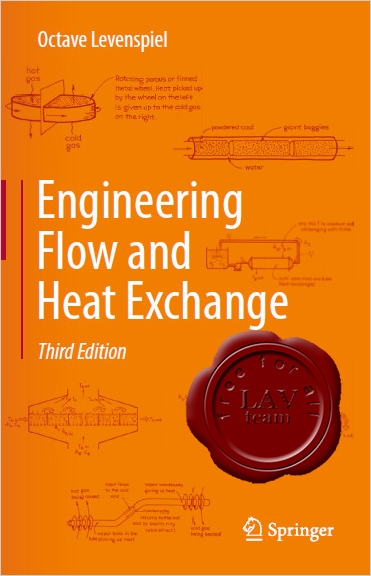
The third edition of Engineering Flow and Heat Exchange is the most practical textbook available on the design of heat transfer and equipment. This book is an excellent introduction to real-world applications for advanced undergraduates and an indispensable reference for professionals. The book includes comprehensive chapters on the different types and classifications of fluids, how to analyze fluids, and where a particular fluid fits into a broader picture. This book includes various a wide variety of problems and solutions – some whimsical and others directly from industrial applications.
- Numerous practical examples of heat transfer.
- Different from other introductory books on fluids.
- Clearly written, simple to understand, written for students to absorb material quickly.
- Discusses non-Newtonian as well as Newtonian fluids.
- Covers the entire field concisely.
- Solutions manual with worked examples and solutions provided.
|
| |
 Читать статью дальше (комментариев - 9)
Читать статью дальше (комментариев - 9)
| |
|
 |
 Автор: Williams Автор: Williams
 Дата: 5 июня 2020 Дата: 5 июня 2020
 Просмотров: 2 273 Просмотров: 2 273 |
| |
Peter Waller, Muluneh Yitayew - Irrigation and Drainage Engineering
+ Irragation and Drainage Excel Files
Springer, 2016
pdf, 747 pages, english
ISBN: 978-3-319-05698-2
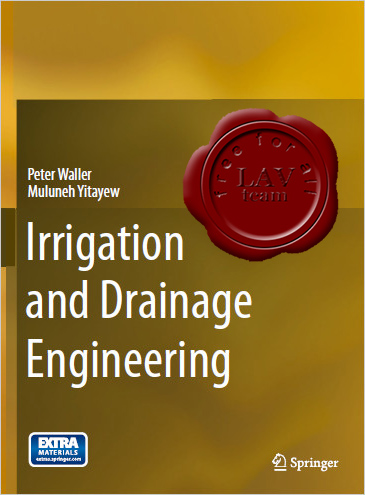
This textbook focuses specifically on the combined topics of irrigation and drainage engineering. It emphasizes both basic concepts and practical applications of the latest technologies available. The design of irrigation, pumping, and drainage systems using Excel and Visual Basic for Applications programs are explained for both graduate and undergraduate students and practicing engineers. The book emphasizes environmental protection, economics, and engineering design processes. It includes detailed chapters on irrigation economics, soils, reference evapotranspiration, crop evapotranspiration, pipe flow, pumps, open-channel flow, groundwater, center pivots, turf and landscape, drip, orchards, wheel lines, hand lines, surfaces, greenhouse hydroponics, soil water movement, drainage systems design, drainage and wetlands contaminant fate and transport. It contains summaries, homework problems, and color photos. The book draws from the fields of fluid mechanics, soil physics, hydrology, soil chemistry, economics, and plant sciences to present a broad interdisciplinary view of the fundamental concepts in irrigation and drainage systems design. |
| |
 Читать статью дальше (комментариев - 15)
Читать статью дальше (комментариев - 15)
| |
|
 |
 Автор: Williams Автор: Williams
 Дата: 3 июня 2020 Дата: 3 июня 2020
 Просмотров: 2 603 Просмотров: 2 603 |
| |
Mark Hudson Beale, Martin T. Hagan, Howard B. Demuth - MathWorks Matlab 2020a
Deep Learning Toolbox (Started Guide, Users Guide, Reference)
Neural Network Toolbox (Started Guide, Users Guide, Reference)
MathWorks, 2020
pdf, 5590 pages (146+2192+1412+136+558+1146), english

Deep Learning Toolbox provides a framework for designing and implementing deep neural networks with algorithms, pretrained models, and apps. You can use convolutional neural networks (ConvNets, CNNs) and long short-term memory (LSTM) networks to perform classification and regression on image, time-series, and text data. You can build network architectures such as generative adversarial networks (GANs) and Siamese networks using automatic differentiation, custom training loops, and shared weights. With the Deep Network Designer app, you can design, analyze, and train networks graphically. The Experiment Manager app helps you manage multiple deep learning experiments, keep track of training parameters, analyze results, and compare code from different experiments. You can visualize layer activations and graphically monitor training progress. You can exchange models with TensorFlow and PyTorch through the ONNX format and import models from TensorFlow-Keras and Caffe. The toolbox supports transfer learning with DarkNet-53, ResNet-50, NASNet, SqueezeNet and many other pretrained models. You can speed up training on a single- or multiple-GPU workstation (with Parallel Computing Toolbox), or scale up to clusters and clouds, including NVIDIA GPU Cloud and Amazon EC2 GPU instances (with MATLAB Parallel Server).
ANNs are a computational model used in computer science, built on a large series of simple neural units, called artificial neurons, which draw inspiration from the behavior observed in the axons of a human brain. Each neural unit is connected with many others, and such link defines the activation status of the adjacent neural units. Every single neural unit performs calculations using the summation function. The models based on ANNs are self-learning and training, rather than explicitly programmed, which his is particularly suitable in cases where the solution function is hard to express in a traditional computer program. The Neural Network Toolbox provides algorithms, pre-trained models, and apps to create, train, visualize, and simulate neural networks with one hidden layer (called shallow neural network) and neural networks with several hidden layers (called deep neural networks). Through the use of the tools offered, we can perform classification, regression, clustering, dimensionality reduction, time series forecasting, and dynamic system modeling and control. Deep learning networks include convolutional neural networks (CNNs) and autoencoders for image classification, regression, and feature learning. For training sets of moderated sized, we can quickly apply deep learning by performing transfer learning with pre-trained deep networks. To make working on large amounts of data faster, we can use the Parallel Computing Toolbox (another MATLAB toolbox) to distribute computations and data across multicore processors and GPUs on the desktop, and we can scale up to clusters and clouds with MATLAB Distributed Computing Server. |
| |
 Читать статью дальше (комментариев - 11)
Читать статью дальше (комментариев - 11)
| |
|
 |
 Автор: Williams Автор: Williams
 Дата: 1 июня 2020 Дата: 1 июня 2020
 Просмотров: 993 Просмотров: 993 |
| |
CCPS (Center for Chemical Process Safety) - Dealing with Aging Process Facilities and Infrastructure
Wiley, 2018
pdf, 198 pages, english
ISBN: 978-1-119-43075-9
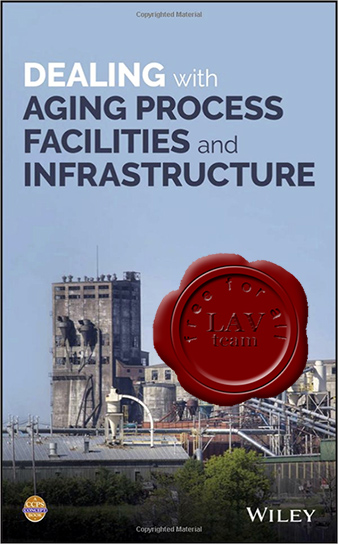
This book explores the many ways in which process facilities, equipment, and infrastructure might deteriorate upon continuous exposure to operating and climatic conditions. It covers the functional and physical failure modes for various categories of equipment and discusses the many warning signs of deterioration. Dealing with Aging Process Facilities and Infrastructure also explains how to deal with equipment that may not be safe to operate. The book describes a risk-based strategy in which plant leaders and supervisors can make more informed decisions on aging situations and then communicate them to upper management effectively. Additionally, it discusses the dismantling and safe removal of facilities that are approaching their intended lifecycle or have passed it altogether.
Filled with numerous case studies featuring photographs to illustrate the positive and negative experiences of others who have dealt with aging facilities, Dealing with Aging Process Facilities and Infrastructure covers the causes of equipment failures due to aging and their consequences; plant management commitment and responsibility; inspection and maintenance practices for managing life cycle; specific aging asset integrity management practices; and more.
- Describes symptoms and causal mechanisms of aging in various categories of process equipment.
- Presents key considerations for making informed risk-based decisions regarding the repair or replacement of aging process facilities and infrastructure.
- Discusses practices for managing process facility and infrastructure life cycle.
- Includes examples and case histories of failures related to aging.
Dealing with Aging Process Facilities and Infrastructure is an important book for industrial practitioners who are often faced with the challenge of managing process facilities and infrastructure as they approach the end of their useful lifecycle. |
| |
 Читать статью дальше (комментариев - 7)
Читать статью дальше (комментариев - 7)
| |
|
 |
 Автор: Williams Автор: Williams
 Дата: 30 мая 2020 Дата: 30 мая 2020
 Просмотров: 1 026 Просмотров: 1 026 |
| |
CCPS (Center for Chemical Process Safety) - Bow Ties in Risk Management: A Concept Book for Process Safety
Wiley, 2018
pdf, 198 pages, english
ISBN: 978-1-119-49039-5
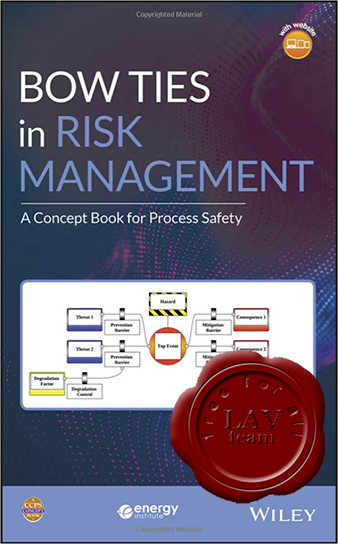
From a collaborative effort of the Center for Chemical Process Safety (CCPS) and the Energy Institute (EI) comes an invaluable book that puts the focus on a specific qualitative risk management methodology – bow tie barrier analysis. The book contains practical advice for conducting an effective bow tie analysis and offers guidance for creating bow tie diagrams for process safety and risk management. Bow Ties in Risk Management clearly shows how bow tie analysis and diagrams fit into an overall process safety and risk management framework.
Implementing the methods outlined in this book will improve the quality of bow tie analysis and bow tie diagrams across an organization and the industry. This important guide:
- Explains the proven concept of bow tie barrier analysis for the preventing and mitigation of incident pathways, especially related to major accidents.
- Shows how to avoid common pitfalls and is filled with real-world examples.
- Explains the practical application of the bow tie method throughout an organization.
- Reveals how to treat human and organizational factors in a sound and practical manner.
- Includes additional material available online.
Although this book is written primarily for anyone involved with or responsible for managing process safety risks, this book is applicable to anyone using bow tie risk management practices in other safety and environmental or Enterprise Risk Management applications. It is designed for a wide audience, from beginners with little to no background in barrier management, to experienced professionals who may already be familiar with bow ties, their elements, the methodology, and their relation to risk management.
The missions of both the CCPS and EI include developing and disseminating knowledge, skills, and good practices to protect people, property and the environment by bringing the best knowledge and practices to industry, academia, governments and the public around the world through collective wisdom, tools, training and expertise. The CCPS has been at the forefront of documenting and sharing important process safety risk assessment methodologies for more than 30 years. The EI's Technical Work Program addresses the depth and breadth of the energy sector, from fuels and fuels distribution to health and safety, sustainability and the environment. The EI program provides cost-effective, value-adding knowledge on key current and future international issues affecting those in the energy sector. |
| |
 Читать статью дальше (комментариев - 6)
Читать статью дальше (комментариев - 6)
| |
|
 |
| ПОИСК ПО САЙТУ |
 |
|
 |
| КАЛЕНДАРЬ | | |
 |
| « Октябрь 2025 » |
|---|
| Пн | Вт | Ср | Чт | Пт | Сб | Вс |
|---|
| | 1 | 2 | 3 | 4 | 5 | | 6 | 7 | 8 | 9 | 10 | 11 | 12 | | 13 | 14 | 15 | 16 | 17 | 18 | 19 | | 20 | 21 | 22 | 23 | 24 | 25 | 26 | | 27 | 28 | 29 | 30 | 31 | |
|
 | |
| |
|